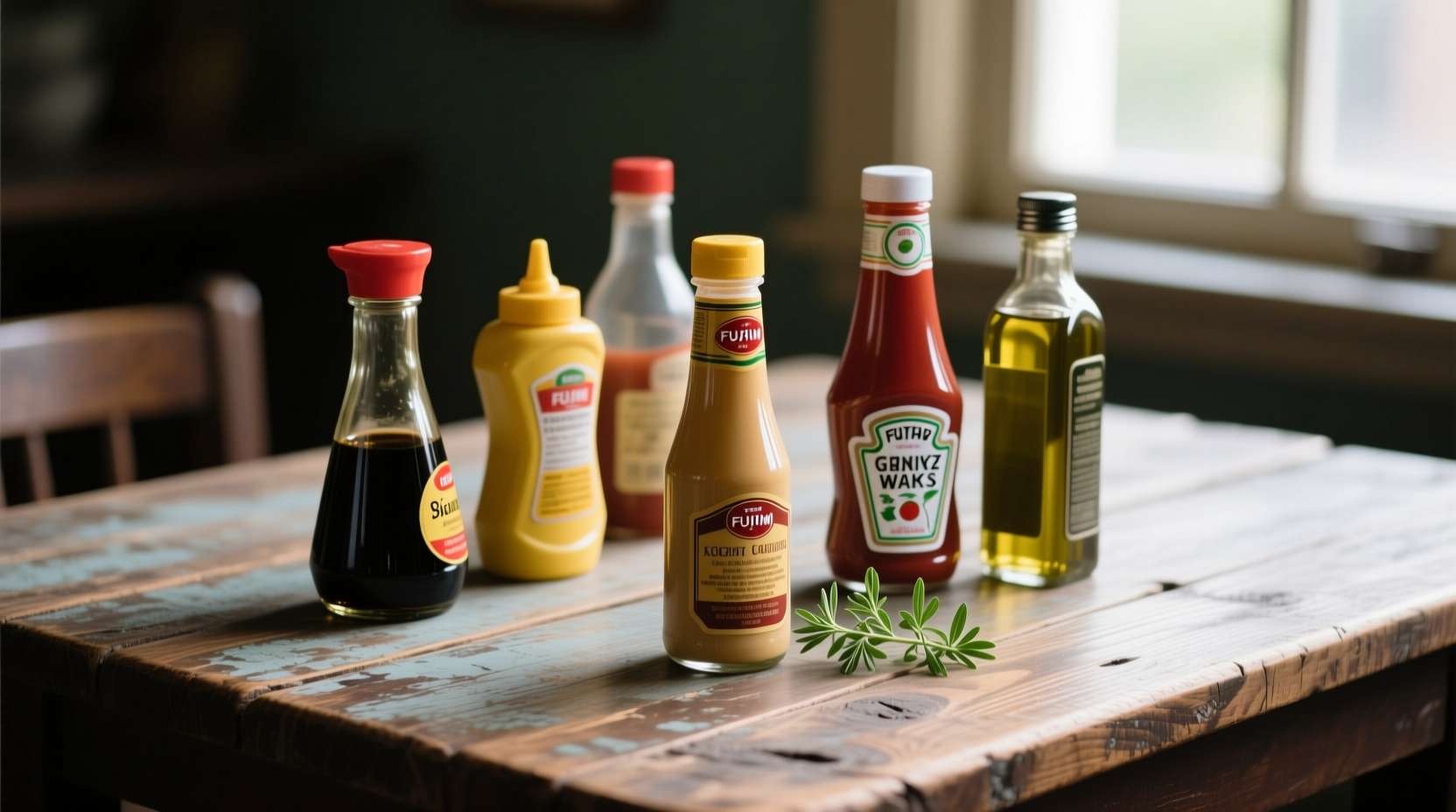Understanding condiments transforms ordinary cooking into extraordinary culinary experiences. Whether you're a home cook or food enthusiast, knowing how to properly select and use condiments elevates your dishes from bland to brilliant. This guide reveals everything you need to know about these flavor powerhouses.
Defining Food Condiments: More Than Just Flavor Boosters
At their core, food condiments serve three primary functions: enhancing existing flavors, adding complementary taste dimensions, and providing textural contrast. The U.S. Food and Drug Administration defines condiments as "products intended to be added to food at the table or in food preparation to enhance flavor."
What distinguishes condiments from similar culinary elements?
| Category | Texture | Application Timing | Primary Function |
|---|---|---|---|
| Condiments | Liquid, paste, or solid | Before, during, or after cooking | Flavor enhancement at point of consumption |
| Seasonings | Dry | During cooking | Base flavor development |
| Spices | Dry | During cooking | Specific flavor compounds |
The Evolutionary Timeline of Condiments
Condiments have shaped human culinary development for millennia. Their history reveals how preservation needs evolved into flavor enhancement:
- 10,000 BCE: Early fermentation techniques created primitive soy sauce in China
- 3000 BCE: Egyptians developed early forms of fish sauce (garum precursor)
- 200 BCE: Romans perfected garum, their ubiquitous fermented fish condiment
- 1600s: Ketchup evolved from Chinese fish-based sauces to tomato-based versions
- 1860s: Commercial production of modern condiments begins with brands like Heinz
- Today: Global condiment market exceeds $30 billion annually according to USDA Economic Research Service

Major Categories of Food Condiments
Understanding condiment classification helps you select the right flavor enhancer for any dish:
Liquid Condiments
These pourable additions work well for dressings, marinades, and finishing touches. Popular examples include soy sauce, Worcestershire sauce, hot sauces, and vinegar-based options. The USDA National Agricultural Library documents over 200 commercially available liquid condiments in American kitchens.
Paste and Spread Condiments
Thicker formulations like mustard, mayonnaise, pesto, and harissa provide concentrated flavor and texture. These often serve dual purposes as both flavor enhancers and binding agents in recipes.
Pickled and Fermented Options
Fermentation creates complex flavor profiles while preserving ingredients. Kimchi, sauerkraut, pickles, and chutneys fall into this category. Food science research from Canadian Institute of Food Science and Technology shows fermentation develops umami compounds that significantly enhance savory perception.
Dry Condiments
While less common, dry condiments like celery salt, seasoned salts, and dry rubs function as ready-to-use flavor enhancers added at the table or during final preparation stages.
Global Condiment Traditions and Cultural Significance
Condiment preferences reveal cultural identities. Japanese diners consider wasabi essential with sushi, while Argentinians wouldn't dream of eating grilled meat without chimichurri. These regional specialties developed from local ingredient availability and historical trade routes.
The globalization of food has created fascinating condiment fusion. Sriracha mayo now appears in sandwiches worldwide, while gochujang has become a staple in non-Korean kitchens. Understanding these cultural contexts helps you use condiments authentically while encouraging creative experimentation.
Practical Guide to Using Condiments Effectively
Mastering condiment application transforms your cooking:
Timing Matters
Add acid-based condiments like vinegar or citrus near the end of cooking to preserve their bright flavor. Umami-rich options like soy sauce can be added earlier to build flavor foundations. Always taste as you go—condiments should enhance, not dominate.
Storage Best Practices
Most commercial condiments contain preservatives, but homemade versions require proper storage. The USDA Food Safety and Inspection Service recommends refrigerating opened condiments containing dairy, eggs, or fresh ingredients within two hours of preparation.
Creative Pairing Strategies
Move beyond traditional uses: try tahini in salad dressings, miso in chocolate desserts, or hot honey on pizza. Professional chefs often create condiment blends to develop layered flavors—start with equal parts and adjust to taste.
Common Condiment Misconceptions
Several myths persist about condiments that limit their culinary potential:
- Myth: All condiments are high in sodium Fact: Many options like fresh salsas and herb-based condiments have minimal sodium
- Myth: Condiments mask poor ingredient quality Fact: Properly used, they enhance rather than cover up flavors
- Myth: Traditional pairings are the only correct uses Fact: Culinary innovation often comes from unexpected condiment applications











 浙公网安备
33010002000092号
浙公网安备
33010002000092号 浙B2-20120091-4
浙B2-20120091-4